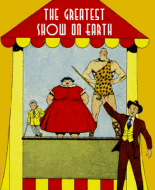Death Valley 2
https://comicbookplus.com/?dlid=20317I've just gone back and read all the comments on these two selections.
Fascinating. Covers a lot of ground.
So, Don Heck!
Morgus said, I wish Heck had worked for Dell and did more of their movie adaptations, and I wish Dell had gotten a contract to do some of the spaghetti westerns from the 60's. His kinetic style would have worked great with some of Corbucci's films in particular.
He would have been good on some of Dell's Westerns too. Wonder why he didn't work for Dell?
Crash said, Others have already commented on the unfortunate way Don Heck was underrated. He was just getting started in his Comic Media stories. As time passed he got even better. If you look at those silly Atlas spook and critter stories you'll see some darned fine drawing...okay, except for the monsters themselves, who always looked like evil muppets. Give him a sorcery tale, a spy or war story, a western, a detective strip, and he was tops. Heck's one weak spot was superhero stories, and because he wasn't Jack Kirby fans never gave him a chance. Anyway, his art here is terrific.
On 'Evil Muppets' - agree completely. What lets down a lot of golden age monster and horror stories is the unbelivability [silliness?] of the drawn monsters.
One of Kirby's strengths was that no matter how wild his monsters looked, they always looked anatomically believable. They are themselves a tribute to his visual creativity.
Heck's one weak spot was superhero stories, and because he wasn't Jack Kirby fans never gave him a chance.
I remember reading an interview with him where he said that he himself compared himself to Kirby and found himself wanting. So, rather than just relax and just be himself, he tried changing his work and still remained unsatisfied.
He actually did quite good work. During his run on Iron Man he introduced both the
Black Widow and Hawkeye. And he had a good run on the Avengers.
Apparently, during the 80's and into the 90's there was a tendency for the young Turks at Marvel to treat some of the older artists badly. Don Heck was one of these and even Kirby got treated shabbily when he returned to Marvel.
The Fan tendency to 'pile on' Don Heck seems to have started later, from the 90's on. I have never understood it.
Don during the 80's and 90's also worked for DC and some of that is quite good.
Quirky said, Nothing makes a woman swoon more than a good murder!
I don't know about swooning, but 'Cozys', Drawing Room mysteries of the Agatha Christie type, were invented by women and are a staple of women's reading. My sister has read everything Christie ever wrote.
And saw the play 'the Mousetrap' when she visited London.

goodreads.com/genres/cozy
Robb said, The Apache young woman's outfit was quite unrealistic. I worked for The Navajo Nation for several years, as well as for a few of The Pueblo Tribes in Arizona and New Mexico during the 1970s, and never saw any female outfits like that worn by anyone then, nor in any historical photographs or paintings. But, the editors clearly wanted to help attract teenaged boys to read and buy their books, so I understand why those outfits are used, and why the featured Native women have European idyllic features. Nevertheless, the story had an interesting (if not unexpected) plot, and a satisfying ending.
I have never expected a fictional representation of anything portrayed of the American 'West' in any kind of fiction, to be fully realistic.
1/ The period generally portrayed is the expansion phrase from the end of the Civil War [May 26, 1865] to the completion of the transcontinental raliway link. [May 10, 1869]
It's not til after 1895 that the 4 wheeled petrol driven car turns up.
[The American George B. Selden filed for a patent on 8 May 1879. His application included not only the engine but its use in a four-wheeled car. Selden filed a series of amendments to his application which stretched out the legal process, resulting in a delay of 16 years before the patent was granted on 5 November 1895]
So, most movies, comics and novels cover only a period of 10 years maximum of US 'Western' history.
2/ The 'Golden Age' of comics coincides with the postwar period when the US's attention was focused on the 'heroic deeds' of its past and Westerns were a staple of film and TV.
Disney's Davy Crockett was huge.
My mates and I played 'Cowboys and Indians'!
It's always been clear to me that 'the West' is to the US as the Arthurian legends are to British culture and I have never expected full accuracy from its fictional depictions.
So, to the book!
A very well-composed cover. Designed to move the eye from the central figure to the gun and then back out again. The blood on the head is particularly graphic for a comic cover, tho.
If Don inked himself here, and I think he did, he should have done more of it.
The stories are essentially generic, although well-told, but I'm concerned mostly with the art.
Fool's GoldCB+ page 5 is well-planned and clear and concise. Nice details on Quillan's clothes and face but only what's necessary for the landscape. As demonstrated -page 5 last panel - Don had a gift for drawing faces.
Bloody SheriffPage #23, the Top panel of the square dance is nice.
The colouring and shading in this book is good too, maybe the colorist was inspired by the art?
Sorry it took too long to post my final comments on this, but for once I had other things to prioritize.
cheers!




